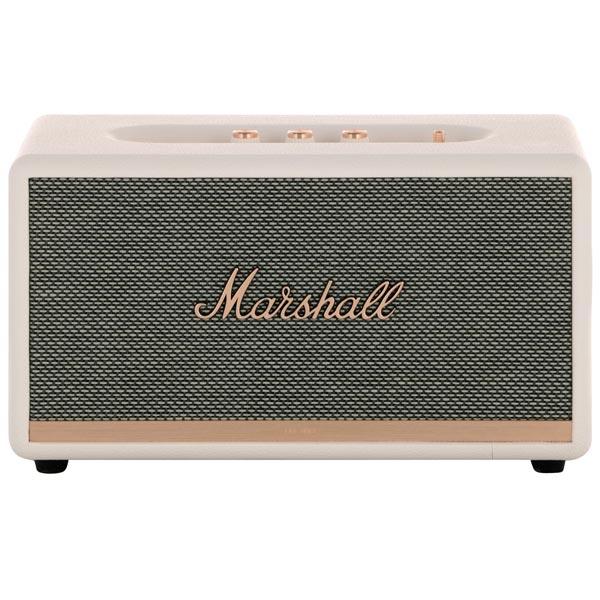
What makes a good car multimedia system?
Content
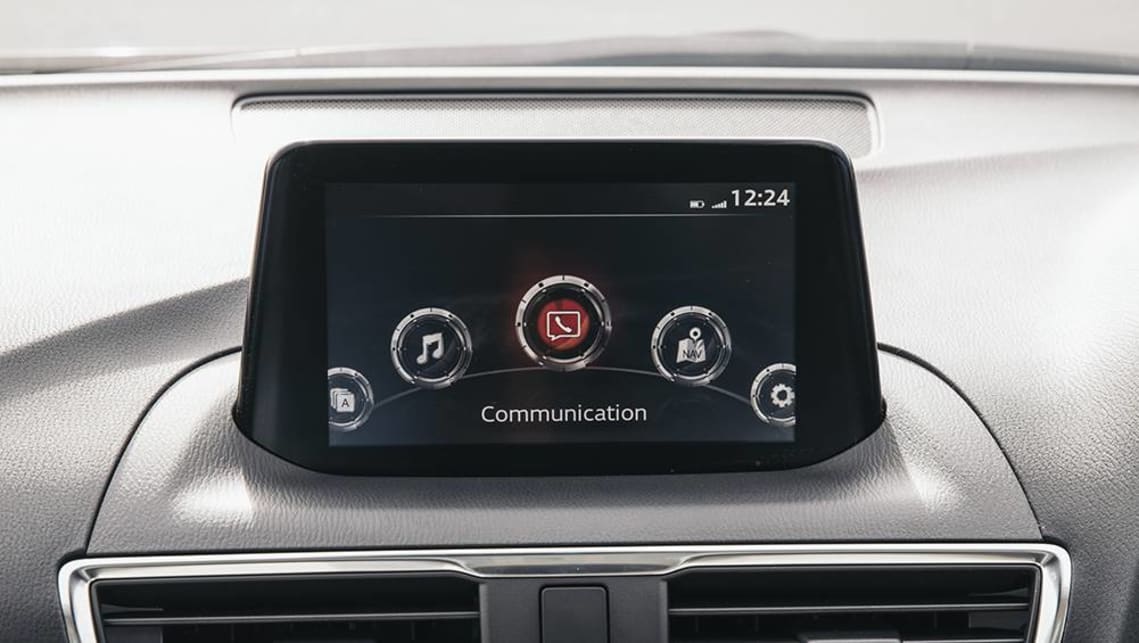
It's no surprise that in-car multimedia systems have taken center stage, literally and figuratively.
Can't tell the difference between MZD Connect, iDrive or Remote Touch? Or are you wondering what's going on with CarPlay and Android Auto?
Don't worry if this all seems confusing. After all, there was a time when having a tape recorder in a car made a big difference and air conditioning was a bit arrogant. In contrast, today's average hatchback can do a lot more, like answering calls, streaming music from the Internet, advising you which route to take, and giving you a three-day weather forecast.
In order to cram in so many features without turning your car into a push-button set that would confuse a nuclear plant operator, the traditional set of knobs and switches has given way to today's set of nifty multimedia systems.
With on-board features becoming more of a selling point than power output, it's no surprise that in-car multimedia systems have begun to take center stage, literally and figuratively.
However, since there are so many things on the road that need your attention, such as errant motorists or speed limits in a school zone, a multimedia system should be designed to help drivers organize and use all of these different features without creating stress.
To reduce complexity, multimedia systems are designed to be accessible and intuitive through the use of similar operating methods.
Sensor systems
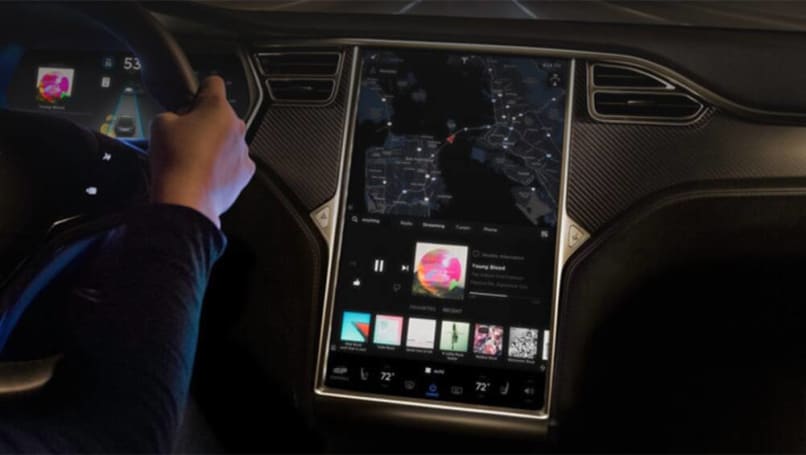 Tesla touchpad in Model S.
Tesla touchpad in Model S.
Most people's idea of a multimedia system is a sleek, flat screen mounted in the center of the dashboard, devoid of buttons or complex switches. It's quite obvious that they envision a touchscreen, which highlights just how popular they've become.
Nowadays, you can find a touchscreen installed on most cars, from the average Hyundai to the top-end Bentley.
These systems are by far the easiest to learn. After all, all you have to do is tap an icon or a bar on the screen to get things done. They are as easy to operate as a smartphone, and look how popular these things have become.
Manufacturers also favor touchscreen systems because they are economical to install, easy to install on most dashboards, and extremely flexible in loading various functions without being limited by hardware limitations.
Various third party vendors can even replace an old radio head unit - provided it takes up enough space - with a modern touchscreen multimedia system with minimal changes to the vehicle's electrical system.
That being said, although such systems are easy to operate, the main disadvantage is that in practice they can be difficult to use when you are on the road. Not only do you have to take your eyes off the road to see what you're about to press, but trying to hit the right button while driving down a bumpy road can test your hand-eye coordination and patience.
Physical controller
 Lexus remote touch interface.
Lexus remote touch interface.
Despite the popularity of the touch screen interface, a number of manufacturers have chosen to retain the physical controller. These are Alfa Romeo's "Connect 3D" central dials, Audi's "MMI", BMW's "iDrive" (and its MINI/Rolls-Royce derivatives), Mazda's "MZD Connect" and Mercedes-Benz's "COMAND", and the mouse-like Lexus Remote Touch controller.
Proponents of these systems say they are easier to control on the move and more intuitive for drivers because you don't have to take your eyes off the road for too long to see where you're pointing. What's more, because the user doesn't have to reach for the screen to operate it, the screen can be placed further away from the dashboard and closer to the driver's line of sight, minimizing distraction.
However, getting familiar with the physical controller is more difficult than with the touch screen system. Users have to get used to the controller and its shortcut buttons, and entering addresses or search terms is much more of a problem due to the limitations of a single controller.
Manufacturers addressed this shortcoming by including a touchpad for handwriting recognition that allows users to write the required letters or numbers, although this feature is more suited to left-hand drive markets where users can operate it with their right hand.
In addition, unlike touch screen systems, controller systems are not as easy to install and require additional hardware and fixtures for integration.
Hand wave control
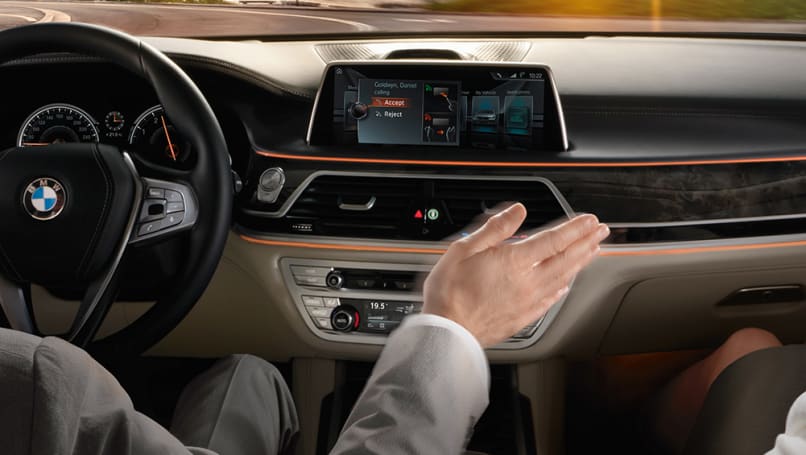 BMW Gesture Control in the 7 Series.
BMW Gesture Control in the 7 Series.
Controlling devices with a flick of the wrist is no longer the preserve of science fiction. This has become a reality thanks to the advent of gesture recognition technology. This technology, commonly found in today's TVs and game controllers, has recently been adopted by multimedia systems, as seen in BMW's "Gesture Control" feature in the 2017 and 7 Series 5. A similar, albeit simpler, version of the technology was recently introduced in the facelifted 2017 Volkswagen Golf.
These systems use a sensor - a ceiling camera in BMW and a proximity sensor in Volkswagen - capable of recognizing hand signals and gestures to activate functions or perform selected tasks.
The problem with these systems, as with BMW Gesture Control, is that the system is limited to simple hand movements, and you have to place your hand in a certain place in order for the cameras to register the action. And if your hand isn't completely within the sensor's field of view, the system won't be able to accurately recognize or track it.
In its current form, gesture control is a promising new means of interaction, but it will complement, not replace, traditional forms of touch-screen systems with knobs.
Probably, gesture control will continue to play a supporting role, like voice recognition. And, like voice technology, its capabilities and scope of work will expand as the technology advances.
The best of both worlds
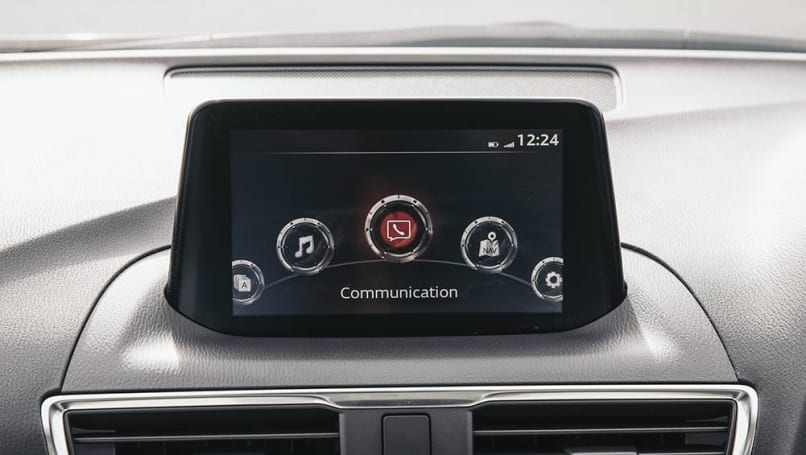 Maистема Mazda MZD Connect.
Maистема Mazda MZD Connect.
Although the ultimate goal of modern multimedia systems is to reduce the number of buttons, the most intuitive multimedia systems use a combination of operating methods. The iDrive system on the BMW 5 and 7 Series, Mazda's MZD Connect and Porsche's communications management system are good examples as they have touchscreen capabilities working hand in hand with rotary controls.
Phone pairing systems
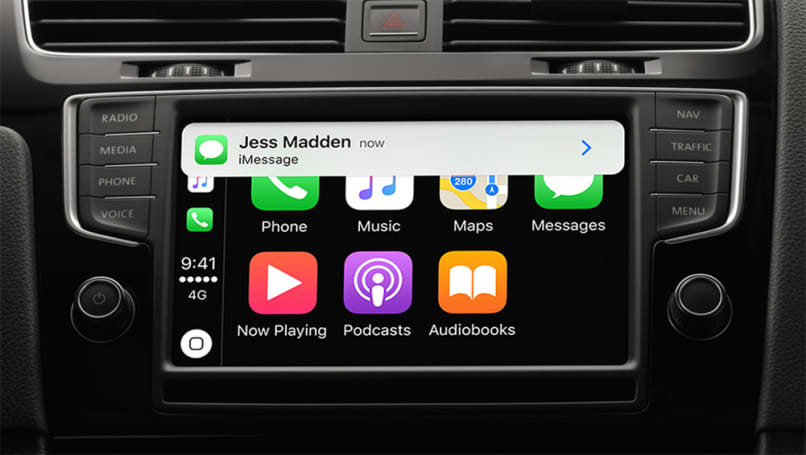 Apple CarPlay home screen.
Apple CarPlay home screen.
With most of us unable to last a few minutes without our smart devices, vehicle integration is becoming increasingly important. While most modern multimedia systems can connect to your phone to answer calls and stream music, the next step in device integration allows users to download and control their smartphone apps and settings through the car's multimedia system.
Automotive manufacturers have begun working closely with technology companies to make device integration smoother. Mirrorlink's standard connectivity feature is one such example of collaboration between the two industries. This feature allows users to run certain supported applications from a Mirrorlink-equipped smartphone on a Mirrorlink-equipped multimedia system when paired.
Like Mirrorlink, Apple's CarPlay and Google's Android Auto were designed to allow users to connect their smartphones to the multimedia system, but only with the appropriate smartphone operating systems.
CarPlay and Android Auto allow users to run and handle OS-specific apps on the multimedia system, such as Apple Music and Siri for CarPlay, Google Maps and WhatsApp for Android Auto, and Spotify on both.
When it comes to device pairing, the CarPlay method is much easier as pairing only requires iPhone to be connected to the car, while Android Auto pairing requires an app to be installed on the phone to enable the wireless connection.
However, please be aware that these apps run from your smartphone, so regular data charges will apply and will be limited to signal coverage. So if you're low on data or enter an area with poor coverage, your Apple Maps and Google Maps may not provide navigational information, and you won't be able to access Siri or Google Assistant.
Which multimedia system is better?
Short answer: there is not a single multimedia system that we could consider "better". Each has its pros and cons and it is up to the driver to figure out which one is best for them.
Ironically, a car multimedia system is something we often don't pay attention to until we use it day in and day out. And you wouldn't want to know that the screen or controller layout isn't all that intuitive once you pick up the car.
Ideally, if you're choosing your next car, connect your phone to the infotainment system during a test drive and check out its features.
The advantages of any multimedia system should not be limited to the size of the screen. A good system should be intuitive, easy to use on the go, and legible, especially in bright sunlight.
How important is an easy-to-use multimedia system and easy integration of in-car devices? Tell us what you think in the comments below.
